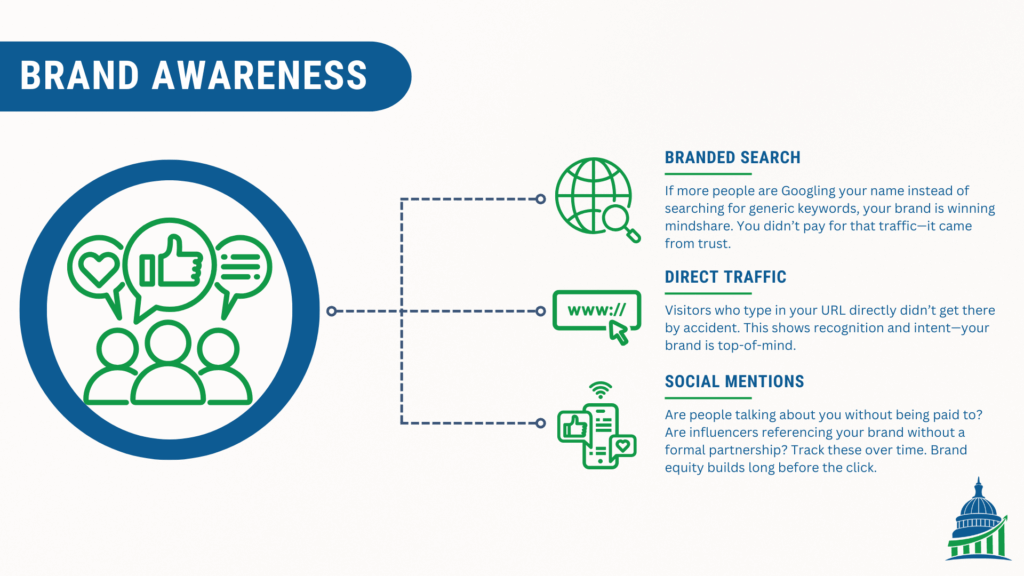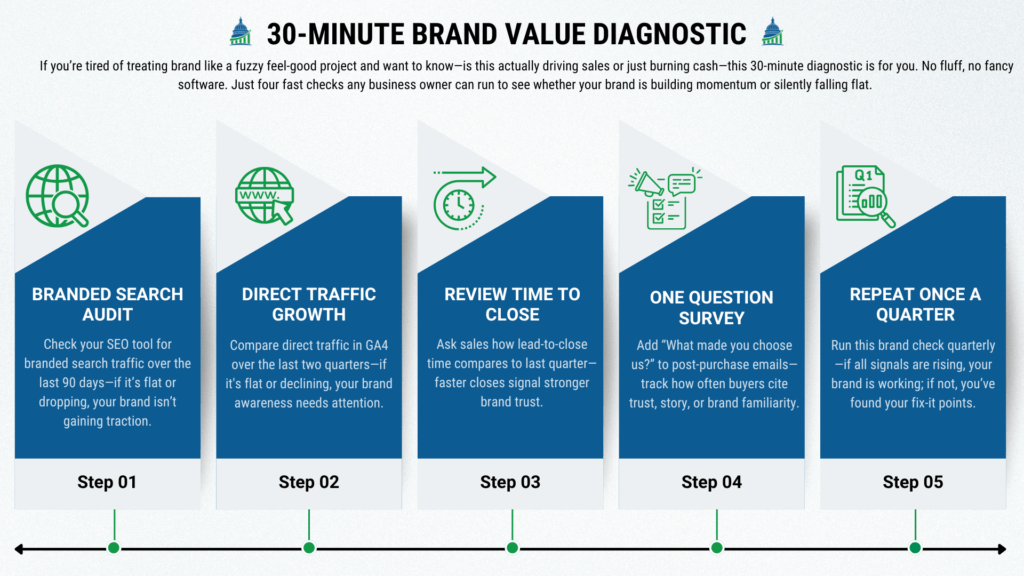Break Open the Black Box—Unlock the Power of Sales Attribution for American-Made DTC Brands.
Read MoreMost direct to consumer business owners think of branding as a luxury. It’s the logo, the look, maybe some ad copy that sounds good—but it’s rarely treated like a business asset. And certainly not like a production line, where every input is optimized, measured, and tied to ROI. That disconnect is costing you. Every time you rely on last-click attribution or fail to track brand influence, you’re flying blind—cutting investment in the one thing that could be your most profitable engine.
Here’s the truth: your brand isn’t just about recognition—it’s about margin. Strong brands shorten sales cycles, increase conversion rates, and give you pricing power that competitors can’t touch. Alex Hormozi puts it best: “The measure of a brand’s strength is its ability to price above market.” When Nike sells a white t-shirt for $60 that a generic sells for $5, that’s brand equity doing the work. And it’s not just Nike—brands with consistency see 10–20% higher revenue, and those that build trust see dramatically better performance across ads, email, and customer retention.
So why doesn’t this show up in your dashboard? Because the tools you’re using weren’t built for this. They track what’s easy, not what matters. They credit the last click, not the ten invisible moments that built trust and tipped the scale. This article is here to change that. We’re going to show you how to measure your brand’s real value—how to see it, quantify it, and use it to drive serious profit. Keep reading, and we’ll walk you through the exact steps to turn brand value from guesswork into a precision growth tool.
Brand Value Attribution is the process of connecting your brand-building efforts—content, messaging, awareness campaigns—to tangible business outcomes like leads, conversions, and customer lifetime value. In other words, it’s the system that shows whether your brand is actually pulling its weight.
Most direct to consumer (DTC) brands treat branding like a feel-good exercise—expensive, vague, and hard to measure. But the truth is, your brand can be your most valuable asset if you know how to track its impact. With the right attribution model, you’ll start proving that it’s a key driver of profitable growth.
If your attribution model can’t tell you how your brand is increasing close rates, lifting prices, or reducing churn—it’s broken. Traditional models were built for PPC marketers and digital ad agencies chasing immediate clicks, not business owners building something with staying power. These models ignore the cumulative weight of your brand and treat everything that happens before the last click as irrelevant.
This leads to a dangerous disconnect. Your marketing may be working—pulling buyers in, raising trust, positioning you as the premium option—but your data says it’s failing. Why? Because it’s not being tracked. That invisible brand momentum, the stuff that turns browsers into buyers over time, slips right through the cracks of conventional attribution.
Even your buyers don’t realize how much your brand influenced them. They’ll point to a discount, an ad, or a single moment—but ignore the 10 touches that actually built enough trust for them to say yes. If your attribution model trusts their “final step” more than the full journey, you’re making business decisions based on illusions.
That “final step” leads to Last-Click thinking. Last-click thinking punishes brand investment. It over-rewards urgency tactics and under-values everything that gives your business pricing power and differentiation. The result? You get leaner in all the wrong places—cutting the very thing that helps you command higher margins and beat commodity competitors. That’s not efficiency. That’s brand suicide.
Your brand produces value in two ways: directly and indirectly. Think of it like a factory floor. Direct outputs are what hit the shipping dock—revenue, profit per order, conversion rate. Indirect outputs are the systems and conditions that allow your line to run smoother, faster, and with fewer errors—brand trust, name recognition, and perceived authority.
Direct brand value is easy to measure. When your brand is strong, customers convert faster, buy more, return less, and refer often. You can track this through hard performance metrics: increased close rates, higher customer lifetime value (LTV), and reduced cost per acquisition (CPA).
But indirect brand value? That’s where most companies leave money on the table. It’s the momentum your brand creates before the buyer ever talks to sales. The silent push that helps you win bids, charge premium prices, or keep buyers from even considering your competitors. It’s harder to spot, but it’s measurable—if you know where to look.
This is where indirect value starts to become visible. Here are three critical signals to track:

These aren’t vanity metrics—they’re early signals of future sales. When these trend up, your brand is warming the lead long before your sales or ad team gets involved.
To truly integrate brand equity into your attribution system, you need to look beyond the last click and include downstream performance indicators.
Here’s what to track:
The key is to stop treating brand like a magic trick and start treating it like an asset. If your brand helps you close faster, price higher, and keep customers longer—it’s time to start measuring and optimizing it like you would any production system. Because when you do, your brand stops being a cost center and starts becoming a profit engine.
If you’re tired of treating brand like a fuzzy feel-good project and want to know—is this actually driving sales or just burning cash—this 30-minute diagnostic is for you. No fluff, no fancy software. Just four fast checks any business owner can run to see whether your brand is building momentum or silently falling flat.

Step 1: Run a Branded Search Audit
Step 2: Check Direct Traffic Growth
Step 3: Review Time-to-Close
Step 4: Ask the One-Question Survey
Pro Tip: Do this once a quarter. If all 4 signals are trending up, your brand is working. If not—now you know where to fix.
As this article makes clear, brand equity is not just about aesthetics—it’s a measurable growth engine that directly impacts sales velocity, pricing power, and customer loyalty. If you’re still relying on last-click attribution alone, you’re likely underestimating your brand’s true contribution to profit.
The path forward is clear: start measuring brand like you would any other critical asset. Use simple diagnostics—like branded search trends, direct traffic growth, and time-to-close—to reveal brand momentum. When you quantify these signals, branding stops being a guess and starts becoming one of your highest-ROI investments.
If the advice from this article didn’t give you the answer you need to win the war against your competition, then click here to schedule a free call with us. We’d be honored to assist you with some customized, free guidance so you can continue to serve the communities you support so well.
Oh, and if you have this and found it the article you needed to read, please share it with another DTC business owner.
Break Open the Black Box—Unlock the Power of Sales Attribution for American-Made DTC Brands.
Read MoreAs an American-made manufacturer, you've relentlessly optimized your production line, yet three hidden wastage points beyond your view still threaten your profitability and even your business survival.
Read MoreThe most profitable American-made DTC brands treat marketing like a production line—tracking six essential metrics that turn data into decisive action and profit.
Read MoreNEED MORE ANSWERS ON HOW TO WIN THE WAR AGAINST CHEAP CHINESE CRAP? WE’D BE HONORED TO PROVIDE SOME CUSTOMIZED FREE GUIDANCE.